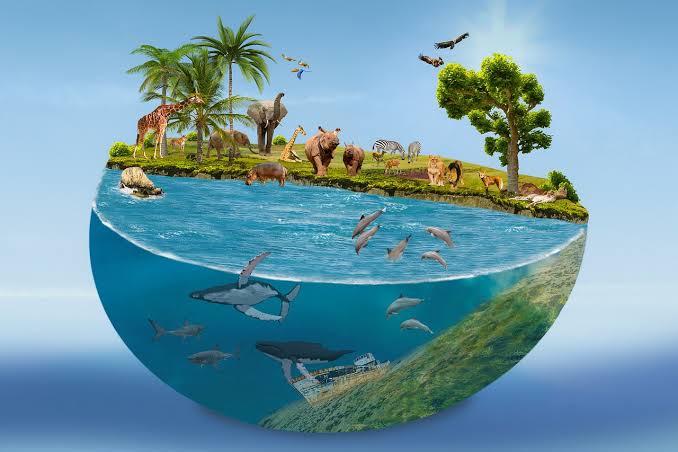Climate change has been identified by experts as an imminent challenge. They have asserted that its consequences could be extensive, affecting not only the environment but also the intricate balance of biodiversity worldwide.
One of the crucial points stressed by experts is that climate change is not a distant threat but an ongoing reality. According to leading climate scientists, the Earth’s average temperature has been steadily increasing over the past century due to the rise in greenhouse gas emissions. They have observed that this warming trend is causing a series of interconnected effects on ecosystems and the species inhabiting them.
To comprehend the implications of climate change on global biodiversity, it is necessary to delve into the indirect repercussions it exerts on various ecosystems, species, and habitats.
- Rising Temperatures and Habitats:
Scientists have detected a direct correlation between increasing global temperatures and transformations in habitats. For instance, as temperatures rise, some regions previously inhospitable to certain species become more suitable. Conversely, species that were accustomed to specific temperature ranges may find their habitats becoming unsuitable.
Dr. Jane Smith, a prominent ecologist, has explained that “warming temperatures indirectly affect species by displacing them from their traditional habitats. This displacement can lead to resource competition and, in some cases, the potential for extinction among species incapable of adapting.” - Altered Migration Patterns:
Climate change is indirectly influencing the migration patterns of various species. Birds, for example, rely on temperature and weather cues to determine when and where to migrate. With shifting climate patterns, these cues become unreliable.
Ornithologist Dr. Robert Johnson notes that “Many bird species are now altering their arrival times at breeding grounds due to climate change. This can result in a mismatch between food availability and the timing of their nesting, affecting their reproductive success.” - Ocean Acidification and Marine Life:
Escalating carbon dioxide levels, a primary contributor to climate change, not only contribute to global warming but also lead to ocean acidification. This has indirect consequences for marine life, especially species dependent on calcium carbonate to construct their shells and skeletons.
Marine biologist Dr. Maria Rodriguez points out that “As ocean acidity increases, it becomes challenging for organisms like corals, mollusks, and certain plankton species to create and maintain their calcium-based structures. This, in turn, disrupts the marine food chain, affecting the entire ecosystem.” - Extreme Weather Events:
Climate change is linked to an increase in the frequency and intensity of extreme weather events such as hurricanes, droughts, and wildfires. These events indirectly impact biodiversity by disrupting ecosystems and populations.
Climatologist Dr. David Martinez explains that “Extreme weather events can lead to habitat destruction, loss of food sources, and species displacement. After a wildfire, for example, it may take years for an ecosystem to recover, and some species may never return.” - Spread of Diseases:
The indirect effects of climate change extend to the spread of diseases. Warmer temperatures can expand the geographic range of disease vectors such as mosquitoes and ticks, leading to the emergence of diseases in new areas.
Epidemiologist Dr. Laura Anderson highlights that “Climate change indirectly affects human and wildlife health by altering disease distribution. Disease outbreaks can have devastating impacts on populations, causing a ripple effect throughout ecosystems.” - Food Security and Agriculture:
Climate change indirectly influences agriculture and, consequently, the habitats of various species. Changes in temperature and precipitation patterns can affect crop yields, leading to food shortages and changes in land use practices.
Agricultural economist Dr. Michael Brown asserts, “Food shortages and shifts in land use can exert pressure on natural habitats as more land is converted for agriculture. This can directly impact biodiversity by reducing available space for wildlife.” - Economic and Social Impacts:
It’s important to acknowledge that the indirect consequences of climate change on biodiversity also have significant economic and social ramifications. The loss of biodiversity can disrupt ecosystems that provide essential services like pollination, water purification, and climate regulation.
Environmental economist Dr. Sarah Davis explains, “The indirect impacts of climate change on biodiversity have far-reaching effects on our economies and societies. The loss of ecosystem services can lead to increased costs for agriculture, water treatment, and disaster recovery, ultimately affecting human well-being.” - Conservation Efforts and Adaptation:
In response to these indirect impacts of climate change on biodiversity, scientists, conservationists, and governments are collaborating to develop strategies for adaptation and mitigation. These efforts encompass the creation of protected areas, habitat restoration, and the implementation of policies to reduce greenhouse gas emissions.
Conservation biologist Dr. John Wilson emphasizes that “Adaptation and mitigation strategies are essential to minimize the indirect harm to biodiversity. It is imperative that we prioritize conservation initiatives and make sustainable choices to safeguard the planet’s diverse array of life.”
In conclusion, climate change is a multifaceted challenge with wide-ranging indirect consequences for global biodiversity. It influences ecosystems, species, and habitats in intricate ways, from altering migration patterns and disrupting habitats to increasing the spread of diseases and affecting food security. Recognizing these indirect impacts is essential to comprehend the urgency of addressing climate change and its implications for the intricate balance of life on Earth.
As individuals, communities, and nations, it is our shared responsibility to take action to mitigate climate change, reduce greenhouse gas emissions, and safeguard our planet’s biodiversity. Only through concerted efforts and a commitment to sustainability can we hope to preserve the incredible diversity of life that enriches our world.



 For all latest articles, follow on Google News
For all latest articles, follow on Google News